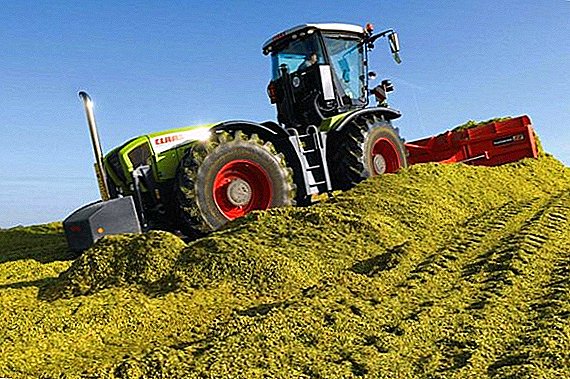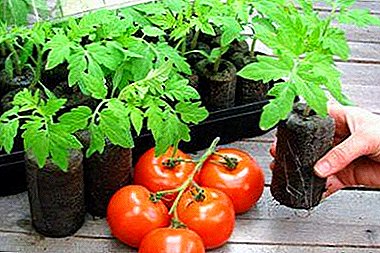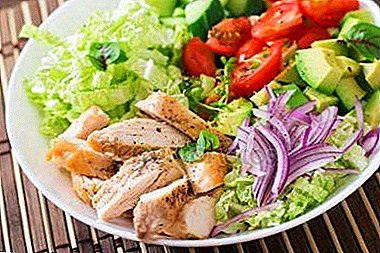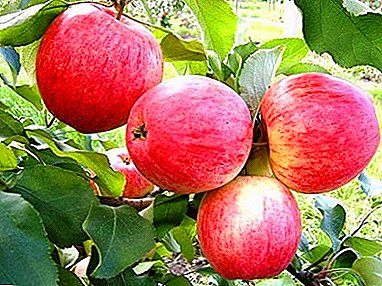 Highly popular among poultry farmers are broiler ducks. They quickly gain mass, do not need to invest a lot in the content of these birds, they give valuable and tasty meat. Let's take a closer look at what common breeds of broiler ducks are, how to breed them and properly care for them.
Highly popular among poultry farmers are broiler ducks. They quickly gain mass, do not need to invest a lot in the content of these birds, they give valuable and tasty meat. Let's take a closer look at what common breeds of broiler ducks are, how to breed them and properly care for them.
Popular breeds of broiler ducks
Such breeds of broiler ducks are especially popular in domestic poultry farming:
- Cherry Valley;
- Mulard;
- Medeo;
- Blagovarsky;
- Super M4;
- Indian runner;
- Chernobelobrudka;
- Agidel

Characteristics of the breed
Each of these breeds is unique and has its own characteristics. In order to choose the right breed, ideal for your farm, you need to understand in detail their characteristics.
Did you know? Ducks are the most popular in China - one third of all ducks in the world are reared there.
Cherry Valley
Egg-duck with English roots, one of the most popular broiler breeds of ducks. It has snow-white plumage, a large body of fat. It features a fast weight gain and up to three months of life is already gaining 3 kilograms of mass. Her meat is red, tougher than white, but very tasty.
Did you know? There are no echoes in duck quacking. The quacking sounds are made only by female individuals.
The egg production period begins at 7 months. The average egg weight ranges from 70 to 90 g. The mother line Cherry Valley is more productive - they carry from 130 to 150 eggs per year. In terms of weight, they also exceed the paternal line - the weight of an adult reaches 4 kg. 
Breed pros:
- fast growth;
- high productivity in meat and egg indicators;
- good chick survival;
- good adaptation to any conditions of care and feeding;
- beautiful appearance.
The only disadvantage of this breed is their troublesome breeding. It is necessary to maintain the temperature conditions in the place where the chicks are housed, to feed them correctly. But with any other breeds in the first months of their life, too, need to bother to grow healthy and strong birds.
Mulard
To obtain this breed, the breeders crossed the Indo-duck with Peking ducks or other domestic breeds. Mulard is a meat breed, a bird weighs 4 kilograms in just two to three months of life. Her meat with high taste.  This breed is suitable for forced fattening and obtaining a fatty liver for foie gras. The colors can be varied: the whole body is white or dark in color with a fuzzy black speck on the head.
This breed is suitable for forced fattening and obtaining a fatty liver for foie gras. The colors can be varied: the whole body is white or dark in color with a fuzzy black speck on the head.
Important! Mulard is a very rare breed, therefore, other breeds are often given out on the market. Carefully check your choice, if possible, invite a familiar experienced breeder with you.
Pluses of ducks Mulard:
- give a lot of tasty meat;
- unpretentious to the conditions of life and nutrition;
- do not require the presence of reservoirs;
- There is a small percentage of body fat.
The disadvantage of this breed is that they are barren, so it is not suitable for those poultry farmers who are going to breed them.
Medeo
Medeo ducks bred by Russian breeders. Appearance and productivity of the breed is similar to Cherry Valley - Medeo's ancestors. Carries from 140 to 150 eggs per year, which weigh about 85 g. The weight of a two-month-old duckling reaches 3.5 kg. Juveniles survive in 70% of cases. 
The positive aspects of the breed can be considered:
- low feed consumption;
- high egg production rates;
- adaptability to life in all conditions.
Negative sides are not noticed.
Blagovarsky
The breed Medeo took part in breeding Blagovarsky cross. A distinctive feature of this breed is low-fat tasty meat.
Important! Blagovarsky cross requires a complete, rich in vitamins and minerals feed, otherwise the weight and egg indicators will decrease.
Blagovarskaya breed is famous for its meat indicators - by the age of two months they already gain 5 kg of weight. On average, 240 eggs are carried for the entire productive period. 
Pluses of Blagovarsky cross-country:
- give a large number of tasty, low-fat meat;
- grow rapidly;
- carry a lot of eggs.
For ducks crosses also include such rocks as old-53, temp.
Breed minuses - the need for a rich diet with a high content of calcium and other trace elements, it is desirable to have a reservoir.
Super M4
Little is known about this breed - they quickly build up weight and have very tasty, lean meat. Birds are unpretentious to the living conditions, food consumption is small.
Did you know? Have ducks have more cervical vertebrae than giraffes.
Indian runner
A special feature of Indian runners is a high egg production rate. They give up to 350 eggs per year, which weigh about 50 g. Their meat indicators are low - adults of both sexes gain no more than 2 kilograms of weight.  They have an interesting body shape, it looks like an elongated bottle. As the name of the breed says, these birds run fast even in the snow and swim well. Their character is calm, but they like to move a lot. They have no requirements for nutrition.
They have an interesting body shape, it looks like an elongated bottle. As the name of the breed says, these birds run fast even in the snow and swim well. Their character is calm, but they like to move a lot. They have no requirements for nutrition.
Important! If you want to increase the egg production rates of Indian runners, add them to the shell rock, chalk and egg shells.
Advantages of Indian runners:
- many eggs are carried;
- look beautiful and unusual;
- quiet and calm, although quite mobile;
- they adapt well to living conditions, tolerate frosts normally;
- chicks as young as 4 weeks old weigh like parents;
- give tasty and healthy meat.
Find out how useful and how much calorie duck meat, as well as meat indouki.
Black-Breasted Breastplate
Chernobiloobrudka, she is a white-breasted black duck - the result of the work of Ukrainian breeders. It is characterized by long maturation. Its maximum weight - 4 kg reaches only by the 6th month of life. But they slaughtered it earlier - at 3 months, when its meat has the highest palatability.  This cross is more meat than egg. The body of white-breasted black ducks weighs an impressive 4 kilograms, and they give only 130 eggs per year.
This cross is more meat than egg. The body of white-breasted black ducks weighs an impressive 4 kilograms, and they give only 130 eggs per year.
Important! White-breasted black duck is important to proper nutrition, because otherwise they can accumulate in the body too much fat.
Pros:
- gives a lot of meat;
- unpretentious to climatic conditions;
- characterized by high survival;
- has a beautiful plumage.
Minuses:
- requires constant monitoring of power;
- birds need a reservoir;
- long ripen.
Agidel
Agidel - Bashkir mixed meat and egg breed.
The duck meat and egg breeds include such as kayuga, blue favorite, Bashkir.
Already at the age of 7 weeks the birds gain 3 kilograms, and in a year they give up to 240 eggs. Eggs are large, their weight is more than 90 g. 
Pros:
- give high-quality, tasty meat;
- unpretentious in the diet;
- grow rapidly in both industrial environments and households;
- resistant to diseases.
Breeding broiler ducks at home
For breeding broiler ducks at home do not need to know a lot. The most important thing is to understand the proper nutrition of ducklings, how to care for them and in what conditions they need to live in order to be healthy and strong.
Did you know? The duckling will consider as his mother any creature that he sees first after hatching.
Nutrition and feeding
The first feeding ducklings - hard boiled egg. Then the little birds are fed wet mash, which add fresh greens and cereals. The mixer can be replaced with high-quality compound feed. In the first few days, weak chicks are fed with a raw yolk from a syringe. 
The diet of the first month of life consists of:
- wholemeal flour and fine cereal grains - 30-40%;
- bran - 10%;
- crushed greens - 30-35%;
- hay flour - 5%;
- ground chalk, shell or seashells - 1%;
- grated carrots - 3-5%;
- beer or baker's yeast - 3-5%;
- fish oil - 1.5%.
The diet is maintained for 10 days, then add more greens. After the 16th day, they transfer to adult food, where corn makes up half the grain part.
Important! For the first time, ducklings need to be fed in the first 18-24 hours of life.
You can not give a duck bread at any age. This disrupts digestion, causes bloating and inhibits growth. 
Even ducklings can not eat:
- any dairy products, except cottage cheese;
- cooked porridge, excluding oatmeal;
- flour;
- any berry, grapes;
- fresh nettle;
- onions and cabbages;
- chicken feed;
- sunflower seeds and maple leaves.
Fresh water is necessary for chicks and adult ducks. However, you need to make sure that the water tank is not deep - the birds can choke. It is useful in the first week of life to add some sugar to the water.
Bird care
Broiler ducks need constant access to the paddock in the fresh air. In the perimeter of the place of walking you need to install a feeder and drinker. Already at the age of 3 weeks they can swim in a pond where they can find additional natural food.  Up to two weeks of age, broiler ducklings are protected from infections by maternal antibodies, but they can still be infected with various pathogens. Ducklings need to do a two-time vaccination against Newcastle disease at the age of 10-15 days and 20-25 days.
Up to two weeks of age, broiler ducklings are protected from infections by maternal antibodies, but they can still be infected with various pathogens. Ducklings need to do a two-time vaccination against Newcastle disease at the age of 10-15 days and 20-25 days.
Important! On the site for walking you need plenty of greenery allowed for ducks - they love to pinch it.
Also needed vaccinations against infectious bursal disease, infectious bronchitis.
The litter litter should be regularly cleaned from litter, so as not to increase the humidity level in the house and not to provoke the development of pathogenic bacteria.
Conditions of detention
In domestic and industrial scale broiler birds are grown on the floor. For this you need a spacious, dry, pre-disinfected room. It should be adjusted ventilation system, in the summer it is especially important.  It is important to monitor the humidity in the room, lighting and temperature. In the first week of life in the room should be light day and night. Then you can reduce the daylight hours to 10 hours. The humidity level in the house should not exceed 65-70%, and the temperature should not fall below +23 ° C.
It is important to monitor the humidity in the room, lighting and temperature. In the first week of life in the room should be light day and night. Then you can reduce the daylight hours to 10 hours. The humidity level in the house should not exceed 65-70%, and the temperature should not fall below +23 ° C.
Did you know? Paws of ducks due to the lack of blood vessels and nerves do not feel cold at all.
If the density of individuals in the house is too large, the ducks will slowly grow and develop, add weight poorly. Up to a month, 16 birds can be placed on one square meter, and then up to 8 ducks on the same square meter.
The floor is disinfected, covered with bedding of straw, shavings, peat, hay. Layer layer should be 15-20 centimeters. Litter periodically updated.  In the first two weeks, chicks are best caged in small groups. It's easier to care for birds. Ducklings in a cage are restricted in movement, their mass is growing rapidly.
In the first two weeks, chicks are best caged in small groups. It's easier to care for birds. Ducklings in a cage are restricted in movement, their mass is growing rapidly.
Important! There are no special cages for ducklings on sale, they need to be made independently from scrap materials.
Broiler ducks are highly productive and unpretentious birds. If you feed them properly, create the necessary conditions for them and care for them with love, all efforts will quickly be rewarded with a large number of healthy eggs and delicious meat.












